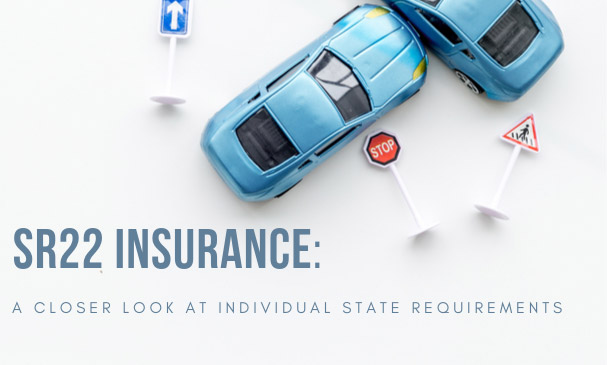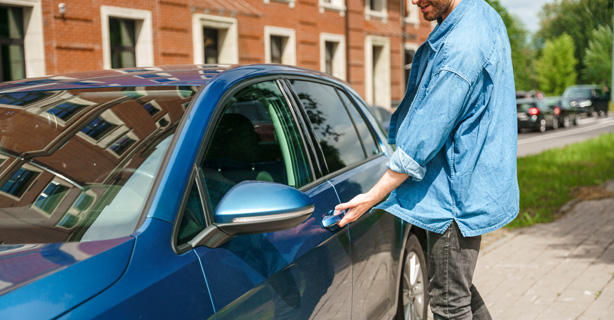SR 22 Insurance and DMV: A Complete Guide
When drivers face certain traffic violations or license suspensions, they may be required to file something called SR 22 insurance with their state’s Department of Motor Vehicles (DMV). Despite its name, SR 22 is not actually a type of insurance policy — it’s a special form your insurance company files with the DMV to prove you carry the minimum liability coverage required by law.
In this guide, we’ll explain what SR 22 insurance is, why the DMV might require it, how to file it, what happens if you don’t maintain it, and ways to save money while meeting your legal obligations.
What is SR 22 Insurance?
SR 22, often referred to as a “certificate of financial responsibility,” is a form filed by your insurance company directly to the DMV. It serves as proof that you have an active auto insurance policy that meets your state’s minimum coverage requirements.
It is typically required for high-risk drivers, which may include:
- Drivers convicted of DUI or DWI
- Individuals caught driving without insurance
- Drivers with multiple traffic violations within a short time
- Those involved in serious at-fault accidents without coverage

Why the DMV Requires SR 22
The DMV imposes SR 22 filing requirements to ensure certain drivers maintain continuous insurance coverage. If you’ve had your license suspended or revoked, the DMV may require you to have SR 22 on file for a specific period (often 3 years).
The main reasons include:
- Proof of financial responsibility after a serious violation
- Reinstating driving privileges following a suspension
- Monitoring high-risk drivers to reduce uninsured driving
How to File SR 22 with the DMV
Filing SR 22 is not something you do personally — your insurance provider handles the process. Here’s how it works:
- Contact your insurance company – Inform them you need SR 22 filing.
- Pay the filing fee – Usually between $15–$50, depending on your state and insurer.
- Insurance company files with the DMV – They send the SR 22 form electronically or by mail.
- DMV confirms filing – Once processed, you may be allowed to reinstate your license.
If you don’t already have car insurance, you will need to purchase a policy that includes SR 22 filing.

Consequences of Not Maintaining SR 22
Failing to keep your SR 22 active can lead to serious consequences:
- Immediate license suspension
- Increased insurance rates
- Restarting the filing period (your 3-year requirement could reset)
- Potential vehicle impoundment in some states
This is why it’s crucial to pay premiums on time and avoid lapses in coverage.
Tips to Lower SR 22 Insurance Costs
Since SR 22 is linked to high-risk drivers, premiums are usually higher than standard policies. However, you can still reduce costs by:
- Comparing quotes from multiple insurers that offer SR 22 filings
- Maintaining a clean driving record during the SR 22 period
- Taking defensive driving courses for possible discounts
- Choosing higher deductibles to lower monthly premiums
- Driving a lower-risk vehicle (older, safe, and inexpensive to repair)

Example Scenario
Imagine John, who was convicted of a DUI. His license was suspended for six months. Before he could get it back, the DMV required an SR 22 filing for three years. John’s insurer filed the form, but a year later, he forgot to pay his premium. His policy was canceled, the DMV was notified, and his license was suspended again, restarting his 3-year requirement.
This example shows why maintaining continuous coverage is essential.
SR 22 and Non-Owner Insurance
If you don’t own a car but still need to drive, you can get non-owner SR 22 insurance. This policy provides liability coverage when driving someone else’s vehicle and fulfills DMV requirements without insuring a specific car.
How Long Do You Need SR 22?
The duration depends on your state and violation, but most requirements last 3 years. However, repeat offenses or serious accidents can lead to longer periods.
Frequently Asked Questions (FAQs)
1. Is SR 22 insurance the same in every state?
No. Requirements vary by state. Some states don’t use SR 22 at all, but have similar forms.
2. Can I switch insurance companies while on SR 22?
Yes, but your new insurer must file the SR 22 before canceling the old policy to avoid a lapse.
3. What happens when my SR 22 period ends?
Once the requirement ends, your insurer will file a form with the DMV confirming you no longer need SR 22. Your rates may gradually decrease.
4. Can I get SR 22 without a car?
Yes. Non-owner SR 22 policies are available for drivers who need coverage but don’t own a vehicle.
5. How much does SR 22 affect my insurance rate?
It varies, but many drivers see an increase of 20–50%. Maintaining a clean record can help lower rates over time.
Final Thoughts
SR 22 insurance may feel like a burden, but it’s a legal requirement for many drivers seeking to regain their driving privileges. By understanding the process, keeping your coverage active, and finding ways to lower costs, you can complete your SR 22 period and get back to normal driving.
If you’re unsure about your state’s specific rules, always check with your DMV or an insurance professional to stay compliant.